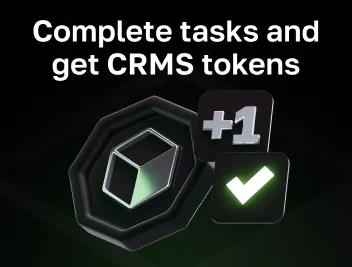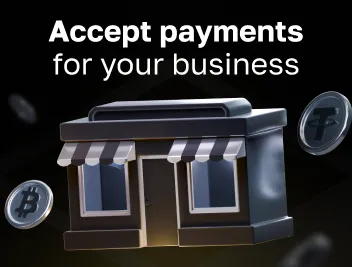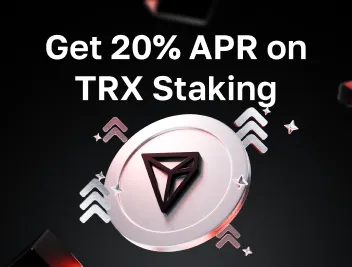
ETH Payment Method: How To Pay With Ethereum
With the growing popularity of cryptocurrencies, Ethereum (ETH) has emerged as one of the most widely accepted digital currencies for payments. Businesses across the globe are beginning to embrace ETH as a payment method, thanks to its speed, security, and global accessibility.
For individuals looking to use their cryptocurrency holdings to purchase goods and services, understanding how to pay with Ethereum is crucial. In this guide, we’ll explore the basics of Ethereum, its advantages as a payment method for both businesses and customers, how to make payments using ETH, and how to set up your wallet for receiving payments using Cryptomus, the easiest-to-use crypto service on the market.
What Is Ethereum?
Ethereum is a decentralized, open-source blockchain that enables developers to build and deploy decentralized applications (dApps) and smart contracts. Launched in 2015 by Vitalik Buterin and a group of co-founders, Ethereum goes beyond being just a cryptocurrency platform. It offers a programmable blockchain, allowing developers to create applications that operate autonomously without the need for a central authority. Ether (ETH), its native cryptocurrency, is used to pay for transaction fees and computational services on the network, making it the "fuel" for Ethereum’s ecosystem. The ETH payment method involves transferring Ethereum from one person’s wallet to another using a blockchain-based payment system, ensuring secure and transparent transactions.
Unlike Bitcoin, which was primarily designed as a digital currency, Ethereum’s purpose extends to providing a platform for decentralized finance (DeFi), non-fungible tokens (NFTs), and other blockchain-based applications. This versatility has made Ethereum the second-largest cryptocurrency by market capitalization, driving innovation across numerous industries.
Benefits of ETH as a Payment Method
As cryptocurrencies continue to gain popularity, Ethereum (ETH) stands out not only as a digital asset but also as one of the best crypto for payments. Let's explore the benefits of using Ethereum as a payment method!
-
For businesses: first, it allows for global transactions without the limitations of traditional banking systems, enabling businesses to tap into a worldwide customer base. With lower transaction fees compared to credit cards or PayPal, businesses can save on operational costs. Additionally, Ethereum’s blockchain technology provides increased security, making transactions immutable and resistant to fraud or chargebacks. For industries dealing with high-value transactions, such as luxury goods or real estate, accepting ETH can streamline the payment process, offering transparency and speed.
-
For consumers: one of the main advantages is enhanced privacy, as Ethereum transactions do not require sharing personal banking details. This makes it a preferred option for individuals concerned about online security. Ownership and control are other key benefits, as users have complete autonomy over their funds without relying on intermediaries like banks. Furthermore, paying with Ethereum is convenient for those who are already invested in cryptocurrency, allowing them to directly spend their holdings on goods and services, often with faster processing times than traditional payment methods.

How to Make Payments with Ethereum?
Making payments with Ethereum is a straightforward process once you’re familiar with the basic steps. Here’s a brief overview of the steps involved:
- Set up an Ethereum wallet and secure it;
- Confirm you have enough ETH;
- Complete the payment transaction.
Step 1. Set Up an Ethereum Wallet and Secure It
The first step in making payments with Ethereum is to set up a digital wallet. An Ethereum wallet is essential for storing your ETH securely and managing your transactions.
You can choose from various types of wallets, including software and hardware wallets. When setting up your wallet, ensure you follow best practices for security, such as using strong passwords and enabling two-factor authentication. We’ll use Cryptomus as an example of the software wallet. So, to set up an Ethereum (ETH) wallet, follow these simple steps:
-
Go to the Cryptomus official website and sign up using your email address or phone number, then log in to your account.
-
After signing up, you’ll be redirected to the overview page, where you can find your personal, business, and P2P wallets.
-
Turn on 2FA so your funds are secured.
-
Pass KYC verification.
-
For testing purposes, you can generate a test payment invoice and use your Ethereum wallet to pay. Ensure that you take into account any applicable network fees when testing the payment gateway.
Once your wallet is set up, you may find a unique Ethereum address in the “Receive” section of your wallet, which is needed to receive ETH payments.
Step 2. Confirm You Have Enough ETH
Before making a payment with Ethereum, it’s essential to ensure you have a sufficient balance of ETH in your wallet. This involves not only having enough to cover the payment amount but also accounting for the transaction fees, known as "gas fees," which are necessary for processing the transaction on the Ethereum network.
To check your ETH balance, open your Ethereum wallet to view your current holdings. If you find that your balance is insufficient, you’ll need to acquire additional ETH. You can purchase ETH from various cryptocurrency exchanges, or on the P2P exchange. These platforms allow you to buy ETH using traditional currencies like USD, EUR, or other cryptocurrencies.
After purchasing ETH, transfer the amount you’ve bought to your Ethereum wallet. Ensure you follow the exchange’s instructions for withdrawal and double-check your wallet address to avoid any errors. Once the ETH has been transferred, verify that your wallet balance reflects the new amount, including any additional ETH for transaction fees.
Step 3. Complete the Payment Transaction
With your wallet set up and ETH balance verified, you can proceed to complete your payment. Navigate to the payment section of the merchant’s website or service, select Ethereum as your payment method, and enter the amount you wish to pay.
You’ll be prompted to enter the recipient’s Ethereum address and review the transaction details. After verifying everything is correct, your wallet will process the payment, and you should receive a notification once the transaction has been submitted. It may take a few minutes for the transaction to be confirmed on the Ethereum network.
Stores that Accept ETH
As more businesses adopt cryptocurrency, ETH is being accepted across a wide range of industries. Below are some of the most popular stores, platforms, and services that accept Ethereum:
- Overstock: a large online retailer where you can buy furniture, electronics, and more using Ethereum.
- Newegg: known for its electronics and gadgets, Newegg accepts ETH for a wide range of tech products.
- Shopify: some merchants on this global platform accept Ethereum, offering diverse goods such as fashion, accessories, and home décor.
- Travala: a crypto-friendly travel booking site where users can pay with ETH for hotels, flights, and vacation rentals.
- CheapAir: a platform that lets you book flights and hotels using Ethereum, providing travelers with payment flexibility.
- NordVPN: one of the leading VPN providers that accepts Ethereum, offering secure, private internet browsing for users.
- Propy: a real estate platform where you can buy or sell properties using ETH, streamlining transactions with blockchain technology.
- ProxySeller: a proxy service that accepts ETH for high-quality, secure proxies, providing users with anonymity and access to restricted content online.
In conclusion, paying with Ethereum offers numerous advantages, including increased privacy, enhanced security, and relatively faster processing times. As more businesses and services begin to accept ETH, the convenience and accessibility of using cryptocurrency for everyday purchases will continue to grow.
Whether you’re making online purchases, booking travel, or paying for services, Ethereum payments provide a modern and efficient alternative to traditional methods by debit and credit cards. Thank you for reading!
Rate the article








comments
0
You must be logged in to post a comment